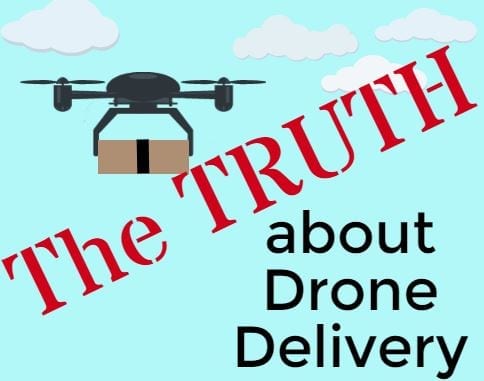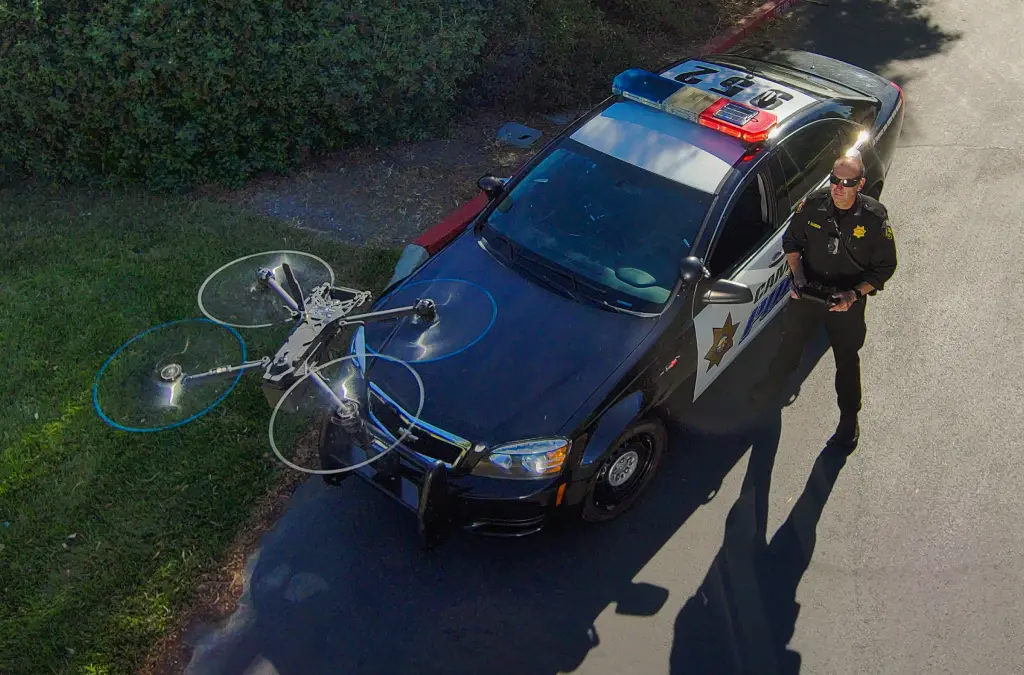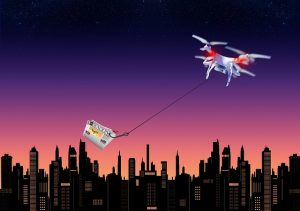
Is Drone Delivery The Future of Logistics?
The use of drones for commercial delivery purposes has grown rapidly in recent years. Drones provide an innovative way to transport goods and packages directly to the customer. As the technology continues to advance, many believe that drone delivery will revolutionize supply chain logistics in the not-too-distant future. In this comprehensive article, we will examine the evolution of drone delivery, its benefits and limitations, regulatory challenges, and outlook for widescale adoption.
The Evolution of Drone Delivery
Unmanned aerial vehicles (UAVs), commonly known as drones, were initially developed for military purposes. However, in the last decade, drones have found widespread commercial and civil applications ranging from agriculture to infrastructure inspection and, most recently, package delivery.
The Rise of Consumer Drones
The origins of drone delivery can be traced back to the rise of consumer quadcopter drones in the early 2010s. Hobbyist drones like the DJI Phantom offered the first accessible and affordable platforms for aerial photography and videography. This early adoption demonstrated that flying drones was not just feasible but could provide various recreational and commercial benefits.
Early Pilot Projects
Seeing the potential, tech companies and logistics providers began testing drones for delivery use cases. In 2013, Amazon unveiled its Prime Air concept to use drones to deliver packages under 5lbs within 30 minutes. Google and UPS also announced exploratory delivery projects around this time.
These early pilots validated the utility of quadcopter drones for short-range, low weight parcel delivery. However, the limited battery life, payload capacity, and safety concerns posed challenges to large-scale implementation.
Improved Technology
Over the last five years, drone technology has improved considerably making parcel delivery more viable:
- Longer flight times – Battery energy density has doubled enabling 15-30 minutes of flight time even with a 5lb payload.
- Higher payloads – Drones can now lift packages up to 10lbs with some designs capable of up to 40lbs.
- Enhanced stability and navigation – GPS, vision positioning systems, and multiple redundant sensors provide reliable and precise flight control.
- Safety features – Obstacle avoidance systems and parachutes allow drones to detect and avoid collisions as well as safely land in case of emergencies.
These enhancements have expanded the addressable market for drone delivery applications.
Benefits of Drone Delivery
Many believe that drone delivery has the potential to revolutionize logistics in the future. Here are some of the main benefits that drone delivery offers over traditional delivery methods:
Faster Delivery Times
Drones can significantly reduce delivery times by efficiently travelling in a straight line directly to the recipient’s location. Without traffic obstacles, drones can cut delivery times from hours down to minutes in some cases. Faster delivery improves customer satisfaction and enables new instant gratification business models.
Lower Delivery Costs
Drones eliminate many of the fixed costs associated with road transport such as driver wages and fuel costs. A drone delivery will cost a fraction compared to a delivery truck and driver. Drones may enable same-day delivery to become economically viable on a large scale.
Increased Accessibility
Drones can access destinations that conventional vehicles cannot such as flying over lakes, forests, challenging terrain or restricted areas. This enables deliveries to remote or difficult-to-access locations.
Environmentally Friendly
Drones produce far fewer carbon emissions compared to truck deliveries. Widespread adoption could help companies lower their carbon footprints and environmental impact.
Enhanced Safety
Drones largely avoid the safety risks associated with truck deliveries such as traffic accidents. They can also integrate redundancies and airbags to minimize damage in case of emergencies.
Increased Efficiency
Drones improve logistics efficiency by avoiding traffic delays, taking optimal air routes, and eliminating waits from multiple deliveries in one trip. Inventory and fulfillment systems can be streamlined to support direct drone delivery.
Additional Business Applications
Beyond package delivery, drones enable various aerial services such as filming, infrastructure inspection, precision agriculture, and more. Logistics companies can expand their capabilities by offering drone services.
Limitations and Challenges
While the benefits are promising, there remain significant limitations and barriers to large-scale drone delivery adoption.
Short Range
Most small drones today have a maximum range of 10-30 kilometers due to battery limitations. This restricts applications to short, local deliveries. Long-range, multi-stop routes are not yet feasible without swappable batteries or charging stations.
Small Payloads
Consumer drones max out at 10-20lb payloads. Larger commercial drones can lift 100lbs or more but deliveries are still limited to smaller packages. Bulk transport of heavier freight across long distances will likely remain in the domain of trucks and air freight.
Weather Disruptions
Drones have trouble operating in rain, wind,snow, and other adverse weather which can disrupt service. Clear weather conditions are required for predictable delivery times.
Strict Regulations
Governments maintain strict drone regulations that limit where, when, and how drones can operate. Complying with aviation rules requires specialized operator training and certification. Regulations continue to evolve to allow more flexible drone use.
Public Skepticism
Citizens may consider drone delivery annoying, invasive, or unsafe. Public acceptance will depend on ensuring drones fly at safe altitudes, minimize noise, and respect privacy concerns.
Infrastructure Needs
Widespread drone delivery will require a massive new infrastructure of thousands of drones, operators, landing pads, charging stations, and command centres. Substantial investments will be needed to build out this infrastructure especially in urban areas.
Security and Safety
Deliveries must be protected against tampering, theft, hacking, or terrorist threats. Drones also present new risks such as collisions with aircraft or dropping packages. Extensive testing is required to prove safe operations.
Regulatory Challenges
One of the biggest obstacles to growth is navigating the complex patchwork of government laws and aviation authority regulations. Policymakers are grappling with how to safely integrate drones into public airspace. Here are some of the main regulatory issues:
Airspace Restrictions
National aviation authorities tightly control airspace zones and restrict areas such as airports, government facilities, or crowded events. Drone operators must gain approvals to fly in permitted zones.
Pilot + Operator Rules
Commercial drone users require licensed pilots and certified operators. Training requirements continue to evolve but currently pose a barrier to widespread casual adoption. Recreational users face fewer restrictions.
Privacy + Safety
Legislation aims to protect public privacy and prevent nuisance such as drones flying over private property or endangering people. Operators must avoid illegal surveillance and reckless flights over crowds.
Security Concerns
Regulators require approval of flight plans, contingency procedures, and operator backgrounds to prevent terrorism and maximize accountability. Drone delivery systems must integrate multiple layers of cybersecurity.
Insurance Requirements
Drone operators must have adequate insurance to cover liability or damages. Standard rates have not yet been established given the emerging nature of drones. Insurance costs may be prohibitively high in the beginning.
Payload + Range Limits
Based on safety assessments, regulators restrict the maximum weight, size, and range of drone payloads. As technology improves, regulators will likely loosen these limits over time.
More Changes Ahead
Rules are rapidly evolving to keep pace with technology. One day drones may have their own dedicated air corridors. Regulators aim to maximize safety without stifling innovation.
Navigating this complex rulemaking landscape will require extensive government relations and a careful incremental approach to scale drone delivery responsibly.
Outlook for Drone Delivery Adoption
Drone delivery is graduating from the trial phase to early commercialization but full-scale adoption is still years away. Here is a look at the road ahead:
Gradual Regulatory Opening
Governments aim to methodically loosen regulations by setting up pilot projects, designated test zones, and allowing expanded night/urban operations for approved operators. Rules will open up progressively based on safety data.
Niche Local Markets First
Early adoption will focus on niche applications for remote/rural areas, medical samples, on-campus deliveries, and critical replacements parts. Localized zones allow concentrated infrastructure to serve specific customers.
Big Investments Underway
Major companies are investing billions into drone delivery programs indicating long-term commitment. Amazon has the most aggressive roadmap targeting scaled operations within five years centered around their dedicated MK30 drone.
Middle Mile Before Last Mile
Long-range inter-warehouse transport will become viable earlier than multi-stop urban deliveries. Moving packages between distribution centers provides value while avoiding dense population centers.
Early Horizontal Expansion
Drone delivery will first expand regionally across cities where a single operator can concentrate resources before attempting national scale. Some countries like Australia or New Zealand with favorable regulations may adopt sooner.
Gradual Urban Deployment
Densely-packed megacities pose huge infrastructure and air traffic control challenges for drone delivery. Urban rollout will be gradual focusing on lower density suburbs first before expanding to high-rise cores.
10 Year Horizon
Most experts anticipate drone delivery will remain a niche supplement and not fully displace conventional delivery trucks for at least 10 years given the technical and regulatory hurdles. Gradual adoption across this timescale is most likely.
With careful advancement, drone delivery is poised to open up new possibilities in logistics. But realizing its full promise will take years of technological refinement, regulatory openness, infrastructure investment, and public acceptance. The road ahead will require collaboration between companies, governments, and communities. While widespread drone delivery may not arrive for a decade, progress is accelerating to make it a bigger part of our skies and cities.
Frequently Asked Questions
Is drone delivery allowed right now?
Drone delivery is currently limited to pilot projects and trial operations under strict regulations. Rules vary widely between countries but often only permit drones in very constrained areas or over sparsely populated rural zones. Regulators are opening up access gradually starting with niche applications.
How does a company get approval to do drone delivery?
Commercial drone delivery requires a licensed pilot, certified aircraft, operating certificates, manuals, maintenance logs, and extensive approval from aviation authorities. Most countries have set up special drone departments to facilitate approvals for qualified applicants meeting safety standards.
What’s stopping widescale drone delivery today?
The main barriers are short range, small payloads, infrastructure needs, airspace restrictions, safety concerns, lack of public acceptance, and immature regulations. Technology is advancing rapidly but it will likely take 5-10 years before drones can effectively compete with trucks for most delivery routes.
Do drones delivery directly to your house?
For residential neighborhoods, drones will likely not deliver directly to doorsteps early on due to privacy concerns and technical limitations. More likely is delivery to safe designated landing pads on private property (like a backyard or porch). Customers then retrieve packages from secured lockers on the pads.
How much does drone delivery cost?
Early estimates suggest drone delivery costs about $1 per mile compared to around $2-4 per mile for road transport. Costs are expected to fall over time as drones become more automated and batteries improve. Drone delivery allows companies to avoid driver costs but they must invest in drone infrastructure.
How many packages can a drone carry at once?
The payload limit for a single drone is around 10-15 lbs depending on model and range. Delivery drones are typically designed for 1-2 packages per flight. Amazon envisions drones carrying 2-3 packages totaling 5lbs each. Larger drones may do bulk transport of 10+ packages between hubs but at lower speed and range.
Aren’t drones dangerous and easy to hack?
Safety and security are paramount concerns. Drone companies implement redundant rotors, parachutes, collision avoidance and GPS tracking for safety. Cybersecurity measures include tamper-proof hardware and encryption to prevent hacking. Extensive testing and certification will be required before expansion near populated zones.
Do people accept drone delivery?
Surveys show public opinion is mixed. Rural residents are more receptive than urbanites. Concerns include privacy, noise, cluttered skies, and dangers. Companies aim to minimize nuisance and market benefits like speed and convenience to sway public perception as citizens experience regulated operations.
What happens if a drone breaks down mid-delivery?
Drones are programmed to safely land immediately if any component failures or battery issues occur. Backup power systems allow controlled descent. Failed deliveries can be reassigned to other drones or aborted. Safety is the top priority even if reliability issues result in delivery failures.
How many years until drone delivery is common?
Experts estimate it will likely take at least 5-10 years before drones make a significant impact on the overall delivery industry. Gradual adoption will start in niche areas but scaling to compete with trucks across most cities and routes will take years of advancement and regulatory changes. The transition is expected to be incremental.






